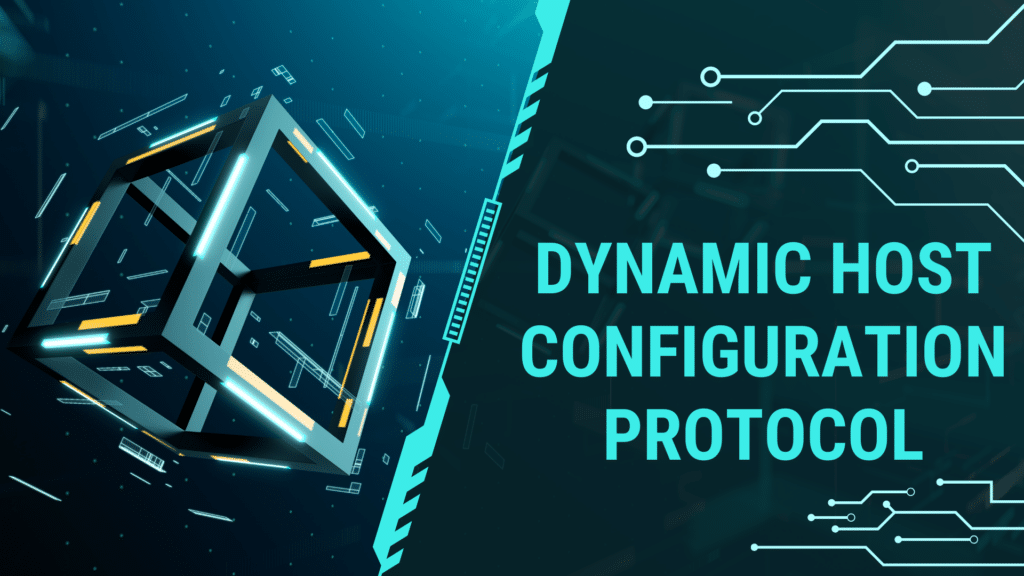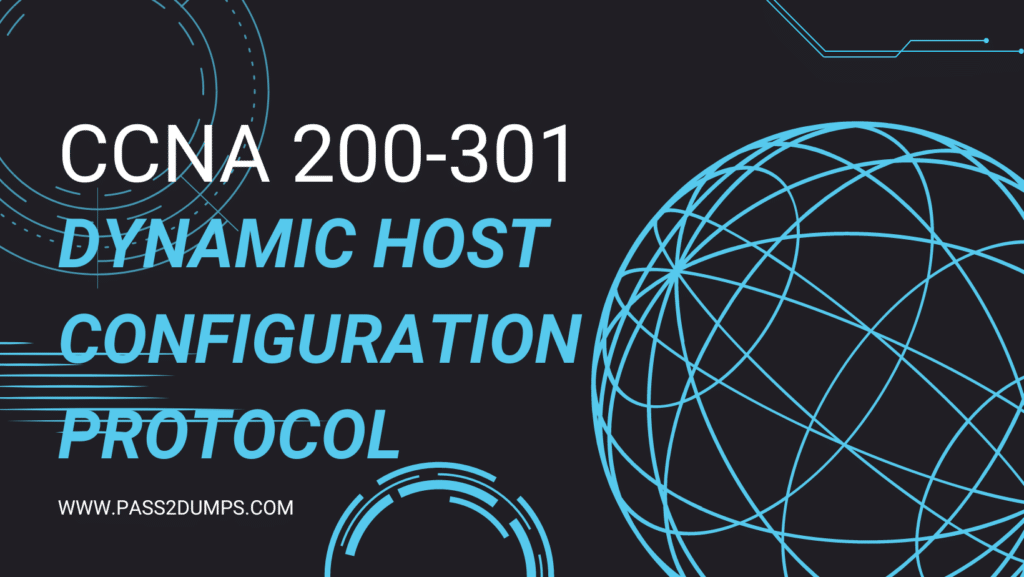Key Takeaways:
- DHCP automates the assignment of IP addresses, streamlining network management and simplifying connectivity.
- It operates on a client-server model, dynamically allocating unique IP addresses to devices within the network.
- DHCP provides additional configuration parameters like subnet mask and DNS server information, enhancing network efficiency.
- Understanding DHCP's history, evolution, and role in network communication is crucial for navigating modern networking environments.
Question: What is Dynamic Host Configuration Protocol (DHCP) and How Does It Work?
Answer: Dynamic Host Configuration Protocol (DHCP) is a networking protocol that automates the process of assigning IP addresses to devices on a network. It operates on a client-server model, where a DHCP server dynamically assigns unique IP addresses to clients within the network. DHCP streamlines network management by eliminating the need for manual configuration, ensuring efficient resource utilization, and simplifying connectivity for users.
Dynamic Host Configuration Protocol
Are you curious about the backbone of network communication? Look no further! Dive into the world of Dynamic Host Configuration Protocol (DHCP) with us as we unravel its significance in modern networking. From its humble beginnings to its pivotal role in connecting devices seamlessly, let's explore how DHCP is shaping the digital landscape. Let's get started on this exciting journey together!

Understanding Dynamic Host Configuration Protocol (DHCP)
Dynamic Host Configuration Protocol, commonly known as DHCP, is a networking protocol that automates the process of assigning IP addresses to devices on a network. By eliminating the need for manual configuration, DHCP streamlines network management and simplifies connectivity for users.
DHCP operates based on a client-server model where a DHCP server dynamically assigns unique IP addresses to clients within the network. This dynamic allocation ensures efficient resource utilization and minimizes conflicts among devices vying for the same IP address.
Moreover, in addition to assigning IP addresses, DHCP can also provide additional configuration parameters such as subnet mask, default gateway, and DNS server information to clients. This comprehensive approach enhances network efficiency and reduces administrative overhead significantly.
Understanding the fundamentals of DHCP is crucial for anyone navigating the complexities of modern networking environments.
History of DHCP and Its Evolution Over The Years
Have you ever wondered about the origins of Dynamic Host Configuration Protocol (DHCP) and how it has evolved over the years? DHCP was first standardized in 1993 with RFC 1531, aiming to automate IP address configurations. Before DHCP, network administrators had to manually assign IP addresses to each device on a network – a time-consuming task prone to errors.
As technology advanced, so did DHCP. With the release of newer versions and updates, DHCP became more efficient in managing IP addresses dynamically within networks. The evolution of DHCP also brought new features like dynamic allocation of IPs, lease time management, and improved security mechanisms.
Today, DHCP plays a crucial role in simplifying network administration tasks for both small-scale home networks and large corporate environments. Its evolution continues as networking technologies progress towards automation and efficiency.
The Role of DHCP in Network Communication
Dynamic Host Configuration Protocol (DHCP) plays a crucial role in network communication by automating the process of assigning IP addresses to devices. In a network, each device needs a unique identifier to communicate effectively, and DHCP simplifies this task.
By dynamically allocating IP addresses, DHCP streamlines the setup and management of networks, saving time and reducing errors that may arise from manual configurations. This dynamic allocation ensures efficient utilization of available IP addresses within the network.
Moreover, DHCP enables centralized management of IP address assignments, allowing network administrators to control and monitor the distribution of addresses easily. This flexibility is particularly valuable in large-scale networks where numerous devices require connectivity.
DHCP facilitates seamless communication within networks by providing a standardized method for allocating and managing IP addresses efficiently.
How Does DHCP Work?
Dynamic Host Configuration Protocol (DHCP) acts as the behind-the-scenes hero in network communication, simplifying the process of assigning IP addresses to devices within a network. When a device connects to a network, it sends out a DHCP discover request looking for an available IP address. The DHCP server within the network then responds with an offer containing the IP address and other configuration details.
Upon receiving this offer, the device sends back a request for that specific IP address. If accepted, the DHCP server acknowledges by sending a final message known as an acknowledgment. This process ensures that each device on the network has a unique IP address without manual configuration.
By automating this task, DHCP streamlines network management and reduces the human error associated with the manual assignment of IP addresses. It also allows for efficient reusing of IP addresses when devices disconnect or leave the network.
Benefits of using DHCP in Networks
Implementing Dynamic Host Configuration Protocol (DHCP) in networks brings a multitude of benefits that streamline network management and improve overall efficiency. One key advantage is the automatic assignment of IP addresses to devices, eliminating the need for manual configuration and reducing human error. This automation saves time and resources, especially in large-scale networks where managing individual IP assignments can be daunting.
Another benefit of DHCP is its ability to centralize network configurations, making it easier to deploy changes across multiple devices simultaneously. With DHCP, administrators can set specific parameters like DNS servers or domain names for all connected devices with ease, ensuring consistency and uniformity throughout the network.
Moreover, DHCP supports dynamic reconfiguration, allowing new devices to seamlessly join the network without disrupting existing connections. It also facilitates efficient resource allocation by reclaiming unused IP addresses once a lease expires, optimizing address utilization, and preventing address conflicts within the network ecosystem.
Common Issues and Troubleshooting Tips For DHCP
Experiencing network connectivity issues can be frustrating, especially when DHCP comes into play. One common problem is IP address conflicts, where two devices have been assigned the same IP address. This can cause disruptions in communication and access to network resources. To resolve this, ensure that your DHCP server has a sufficient pool of available addresses to assign.
Another issue could be DHCP server failures leading to devices not receiving an IP address. In such cases, check the server's configuration settings and restart the service if necessary. Incorrect subnet configurations can also cause DHCP problems; make sure all devices are on the correct subnet for seamless communication.
Troubleshooting DHCP involves verifying network cables, checking device settings, and monitoring event logs for any errors or warnings. By identifying and addressing these common issues promptly, you can maintain a stable and efficient network environment for smooth operations.
Future of DHCP and Its Importance In The Evolving Networking Landscape
As technology continues to advance at a rapid pace, the future of Dynamic Host Configuration Protocol (DHCP) holds great significance in the evolving networking landscape. With the rise of IoT devices and increasing demand for seamless connectivity, DHCP plays a crucial role in simplifying network management and ensuring efficient allocation of IP addresses.

In the coming years, DHCP is expected to adapt to support emerging technologies such as 5G networks and edge computing. This will enable organizations to scale their networks effectively while maintaining flexibility and security. Additionally, advancements in automation and artificial intelligence are likely to enhance DHCP's capabilities in optimizing network performance and troubleshooting issues proactively.
As cybersecurity threats evolve, DHCP will also play a key role in implementing robust security measures within networks. By continuously updating protocols and incorporating encryption standards, DHCP will help safeguard against unauthorized access and data breaches. The future looks promising for DHCP as it continues to evolve alongside technological innovations shaping the networking landscape.
Conclusion
Dynamic Host Configuration Protocol (DHCP) plays a crucial role in modern networking by simplifying the process of assigning IP addresses and other network configuration parameters. It has evolved over the years to become an essential component in ensuring smooth communication between devices on a network.
Understanding how DHCP works, its benefits, and common issues are vital for any IT professional working with networks. By automating the assignment of IP addresses, DHCP saves time and reduces human error, making it a valuable tool for efficient network management.
As technology continues to advance and networks become more complex, DHCP will remain relevant as an integral part of network infrastructure. Its ability to streamline network configuration processes makes it indispensable for organizations looking to optimize their network performance.
In the ever-evolving landscape of networking technologies, understanding and leveraging DHCP effectively can make a significant difference in maintaining secure, reliable, and scalable networks. Stay informed about updates and best practices regarding DHCP to ensure your networks operate efficiently now and in the future.
Shannon Martines
Pass2dumps provided excellent customer support throughout my CCNA preparation journey. Their team was responsive and always willing to answer my questions. I'm grateful for their assistance in achieving my certification goals.
Robert Caulkins
Thanks to Pass2dumps, my CCNA exam experience was stress-free. Their practice tests equipped me with the knowledge and skills to handle any question thrown my way.
David Windham
The investment in Pass2dumps' CCNA resources was well worth it. Their materials were comprehensive and significantly boosted my confidence on exam day. I highly recommend them to anyone seeking an affordable and effective study solution.
Cheryl Denison
I was initially skeptical about using practice exams, but Pass2dumps exceeded my expectations. Their questions were challenging but fair, and they helped me identify my weak areas for improvement.
Nicholas White
As a self-paced learner, Pass2dumps was the ideal platform for my CCNA preparation. Their resources were flexible and allowed me to learn at my own convenience. I highly recommend them for anyone who prefers an independent study approach.
Christine Mullenax
The quality of Pass2dumps' CCNA study materials is top-notch. The practice exams were realistic, and the explanations were detailed and helpful. I felt prepared to tackle any challenge on the actual exam.
Damon Stlouis
Pass2dumps helped me maximize my study time for the CCNA exam. Their resources were focused and relevant, allowing me to efficiently learn the key concepts. I highly recommend them to busy professionals like myself.
Kevin Young
Passing the CCNA exam felt like a huge hurdle, but Pass2dumps made it achievable. Their practice exams closely resembled the real exam format, and their explanations were clear and concise. I highly recommend them for anyone preparing for the CCNA!
Maxwell Ledford
Pass2dumps became my go-to resource for CCNA prep. Their question bank was extensive and covered all the essential topics. I felt confident and prepared going into the exam, thanks to their practice tests.
Wilma Rottman
Earning my CCNA certification has been a game-changer. Pass2dumps provided the solid foundation I needed to succeed. Their materials were up-to-date and aligned perfectly with the current exam content.